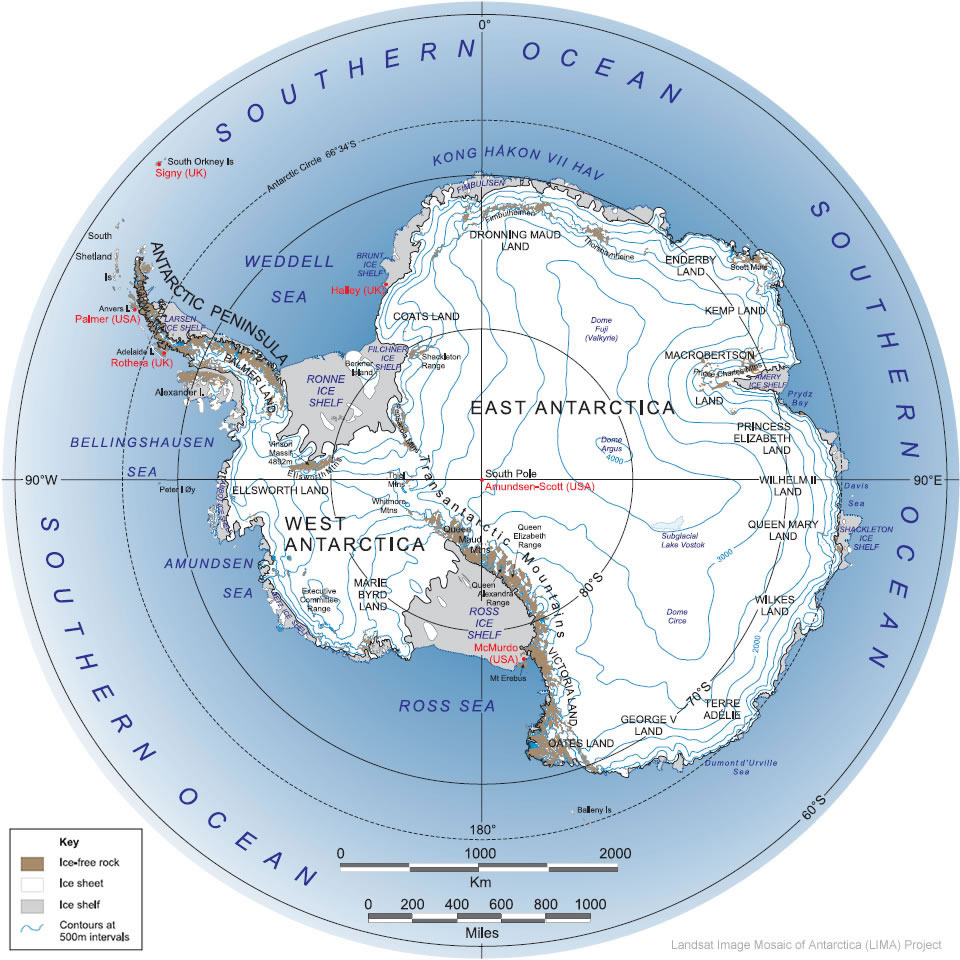
Fails to grasp significance of observation: The estimated geothermal heat flow occurring beneath the West Antarctic Ice Sheet is not enough to cause the modern ice loss trend. Instead, geothermal heat merely helps explain why and how changes in climate and ocean circulation are causing the ice sheet to melt.

REVIEW
CLAIM: Volcanoes Melting West Antarctic Glaciers, Not Global Warming[...] Three new research studies confirm that geothermal heat flow, not man-made global warming, is the dominant cause of West Antarctic Ice Sheet (WAIS) melting.
This claim was included in a January 2020 article posted by IceAgeNow.info. It primarily quotes a June 2018 article by James Kamis, published on PlateClimatology.com, which makes the same claim. Similar to another article by Kamis recently evaluated by Climate Feedback, this one misrepresents the findings of three studies by stating that glacial ice is melting due to geothermal heat flow beneath the ice rather than climate change.

The first study1 examines evidence for volcanic heat flow beneath a portion of the West Antarctic Ice Sheet known as Pine Island Glacier, which is located near the Amundsen Sea. The study does not claim that this volcanic heat flow is the cause of modern ice loss measured there. It explains that “the existence of subglacial volcanism impacts both the stable and unstable dynamics of an ice sheet such as the [West Antarctic Ice Sheet]”. Subglacial volcanism can cause the base of a glacier to thaw, which causes them to behave differently than when they are frozen to the ground and can make them more vulnerable to rapid retreat. In addition, the presence of moving meltwater at the base further enables the glacier to slide along the ground.
The study describes how volcanic heat flow can be used to accurately model the future behavior of the Pine Island Glacier. It says, “The magnitude and the variations in the rate of volcanic heat supplied to the Pine Island Glacier, either by internal magma migration, or by an increase in volcanism as a consequence of ice sheet thinning, may impact the future dynamics of the Pine Island Glacier, during the contemporary period of climate-driven glacial retreat.” [Emphasis added.]
The second study cited in the article2 analyzed GPS measurements of vertical bedrock movement beneath the West Antarctic Ice Sheet. Due to a process similar to buoyancy (but called “isostasy” in this case), Earth’s crust rises up or sinks down into the mantle as weight (such as from an ice sheet) is added or removed. The researchers noted that as Antarctica loses ice, the bedrock beneath it is slowly lifting. Their work involved estimating the characteristics of the mantle beneath West Antarctica to explain the especially rapid rate of bedrock uplift that has been measured.
The PlateClimatology.com article rejects the study’s conclusions and instead claims, without evidence, that the bedrock uplift is due to hot mantle rock that is rising and fueling increased volcanic activity. The study does not support this claim.
The third study3 examined a record of the behavior of the West Antarctic Ice Sheet over the past 11,000 years. (As with the second study, the PlateClimatology.com article mistakenly lists the title of a press release about the study as the title of the study.) This study found that the ice sheet retreated about 10,000 years ago before then stabilizing and expanding. The researchers used a model to investigate why it stabilized and applied this knowledge to discuss how the ice sheet will behave as it continues to retreat today.
The PlateClimatology.com article asserts that, without evidence of a similar period of retreat along the more-stable East Antarctic Ice Sheet, the past retreat of the West Antarctic Ice Sheet must be due to volcanic activity rather than climate warming.
This directly contradicts the study, which states, “In this simulation, rising sea-level and surface temperatures during the last glacial termination drive grounding-line retreat through regions currently occupied by the Ronne and Ross ice shelves.”
REFERENCES
- 1- Loose et al (2018) Evidence of an active volcanic heat source beneath the Pine Island Glacier, Nature Communications
- 2- Barletta et al (2018) Observed rapid bedrock uplift in Amundsen Sea Embayment promotes ice-sheet stability, Science
- 3-Kingslake et al (2018) Extensive retreat and re-advance of the West Antarctic Ice Sheet during the Holocene, Nature


